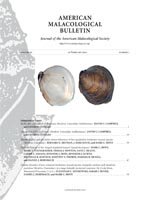We compared patterns of genetic population structure and historical demography of several tropical Pacific Conus species that have similar though not completely overlapping distributions. Although these species possess similar life histories with planktonic larval durations of at least three weeks and exhibit genetic homogeneity across broad expanses of their distributions, they show distinct patterns of genetic population structure that are largely associated with genetic differentiation of geographically isolated populations. While previous analyses of C. ebraeus (Linnaeus, 1758) and C. miliaris (Hwass in Bruguière, 1792) detected high levels of genetic differentiation among isolated locations in the eastern Pacific and at Easter Island for each species, respectively, C. chaldaeus (Röding, 1798) does not show robust evidence of population differentiation across the East Pacific Barrier, albeit the sample size from the eastern Pacific is small. In addition, unlike C. chaldaeus and C. ebraeus, C. sanguinolentus (Quoy and Gaimard, 1834) exhibits a strong genetic break at Hawaii. Analyses of mismatch distributions suggest recent population expansion of C. chaldaeus and C. sanguinolentus as well as the Hawaiian endemic species C. abbreviatus (Reeve, 1843) during the past one million years as was observed previously for tropical Pacific populations of C. ebraeus and C. miliaris. Taken together, these results show that although high dispersal rates appear to genetically homogenize broadly distributed species in the tropical Pacific, stochasticity in long-distance dispersal likely instigates genetic differentiation of geographically isolated and peripheral populations and results in discordant phylogeographic patterns among even closely related species. Thus, population divergence and speciation in the tropical Pacific likely occur among populations at isolated locations though gene flow tends to prevent differentiation at broad geographic scales in species with high potentials for dispersal.
How to translate text using browser tools
1 February 2012
Patterns of Population Structure and Historical Demography of Conus Species in the Tropical Pacific
Thomas F. Duda,
Marielle Terbio,
Gang Chen,
Semoya Phillips,
Amy M. Olenzek,
Dan Chang,
David W. Morris
ACCESS THE FULL ARTICLE
Conidae
cytochrome oxidase subunit I
genetic differentiation
PHYLOGEOGRAPHY
population expansion





